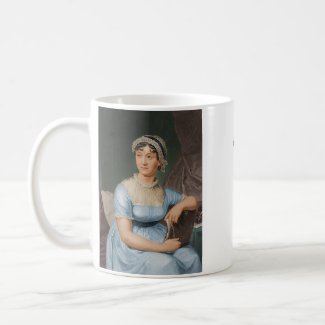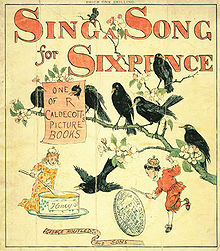by_Nathaniel_Dance,_(later_Sir_Nathaniel_Dance-Holland,_Bt)_ _Brown_by_Nathaniel_Dance%2C_(later_Sir_Nathaniel_Dance-Holland%2C_Bt)_cropped.jpg/800px-Lancelot_('Capability')_Brown_by_Nathaniel_Dance%2C_(later_Sir_Nathaniel_Dance-Holland%2C_Bt)_cropped.jpg) | ||
The road to true love begins to to run smooth
The 50 miles of good road in Pride
and Prejudice, Darcy's 10,000 a year, and the "ha-ha" in Mansfield
Park are all features of the times and background for Capability Brown's
influence on English gardening.
August 30th 2016 marked the tercentenary of the baptism (his date of birth is
unrecorded) of Lancelot 'Capability’ Brown (1716-1783). If you were in
England this year, you may have seen certain events dedicated to this man who
transformed the British landscape with his vision of naturalistic gardens
See The
genius of Capability Brown. People in Britain were even given the opportunity to buy special stamps to commemorate the 300th anniversary of Capability Brown's birth.
I only heard about him on this side
of the Atlantic because on one of the tours of Old Westbury Gardens (which were designed to emulate
English estates to appeal to the taste of the owner's British bride) the
guide mentioned Capability Brown as the designer. Of course, he couldn't have
designed the Long Island estate directly, but his influence came through in
the play of lawns, trees, and water to be found even on Long Island.

thatched cottage at Old Westbury Gardens
Curious about the person who shares
our last name, my husband looked for books about him in our library system.
We only succeeded in obtaining one: Roger Turner's Capability Brown
and the Eighteenth-Century English Landscape. The History
Press Rizzoli International Publications, 1985. While Turner frequently
quotes the poet Alexander Pope to give some literary background and one time
quotes the writer Hannah More, he fails to mention Jane Austen in connection
with the transformation of the landscape at all, and this is an omission I
intend to rectify here.
In fact, we owe our visions of Mr. Darcy's beautiful estate, Pemberly, to Capability Brown, as well. He set out the design for Chatsworth House. that house was was used as the setting for Pemberley in the 2005 film adaptation of Pride and Prejudice.
As Turner writes on p. 17, "During Brown's practising years, 1750-80, the time taken
between London and the major towns was halved. Before these improvements bad
weather and wintry conditions made travel impossible for wheeled
traffic."
Earlier in the book, we have the
famous pronouncement about Darcy's wealth amounting to 10,000 a year. That
figure is also one that Turner mentions as requisite for an estate owner to
really maintain a good figure in society: "At least five or six thousand
pounds a year was required to support a great house, to allow for the
expenses of the London season and to enable the owner to patronize the arts.
More comfortably it required ten thousand a year" (p. 17).
The book named for a park
Awareness of garden features gains prominence in Austen's Mansfield Park. In chapter 10, Maria Bertram complains: “Yes, certainly, the sun shines, and
the park looks very cheerful. But unluckily that iron gate, that ha-ha, give
me a feeling of restraint and hardship. ‘I cannot get out,' as the starling
said.” Refusing to remain restrained, she goes through, ignoring Fanny's
warning of the danger of slipping into the ha-ha.
Of course, all this foreshadows
Maria's breaking through the set boundaries of her marriage and becoming a
fallen woman. But there still had to be a physical ha-ha, a type of sunken
fence that created a barrier between the extended grounds of the estate where
animals could graze and the gardens near the house without obstructing the
view. This was not a feature that Brown invented but one that he did
use.
Taylor refers to this device
and the explanation for its name on p. 29 in quotes Horace
Walpole's 1770 essay On Modern Gardening:
"The capital stroke, the leading
step to all that has followed, was (I believe the first thought was
Bridgeman's) the destruction of walls for boundaries, and the invention of
fosses -- an attempt then deemed so astonishing, that the common people called
them Ha! Ha!s to express their surprise at finding a sudden and unperceived
check to their walk."
In fact, though, Charles
Bridgeman (1680?-1738) could not have been the first to make use of
this sunken fence, as it already was in
use in Versailles before it appeared in England. However, it appears to
have become increasingly common in England in Jane Austen's time, enough so
that she could safely assume her readers would be able to picture the obstruction
posed by the ha-ha she references several times in Mansfield Park.
The woman writer Turner does
quote, Hannah More (p. 78) was already quoted by a prior biographer of
the master gardener, Dorothy Stroud. She records what the writer said
about here"friend Mr. Brown" who "illustrates everything he
says about gardening by some literary or grammatical allusion."
She said:
While Taylor doesn't like the literary take on landscaping, it strikes me as
an inverse of what Austen said about her own writing in the expression about
her own miniature scale. The quote comes from a letter to her nephew, James
Edward Austen-Leigh: "What should I do with your strong, manly, vigorous
sketches, full of variety and glow? How could I possibly join them on to the
little bit (two inches wide) of ivory on which I work with so fine a brush,
as produces little effect after much labour?"
Capability Brown's landscaping took a great deal of labor to produce subtle
effects that could be appreciated many years later. The same can be said of
Austen's novels.
The 50 miles of good road in Pride
and Prejudice, Darcy's 10,000 a year, and the "ha-ha" in Mansfield
Park are all features of the times and background for Capability Brown's
influence on English gardening. August 30th 2016 marked the tercentenary of the baptism (his date of birth is unrecorded) of Lancelot 'Capability’ Brown (1716-1783). If you were in England this year, you may have seen certain events dedicated to this man who transformed the British landscape with his vision of naturalistic gardens See The genius of Capability Brown. People in Britain were even given the opportunity to buy special stamps to commemorate the 300th anniversary of Capability Brown's birth.
I only heard about him on this side
of the Atlantic because on one of the tours of Old Westbury Gardens (which were designed to emulate
English estates to appeal to the taste of the owner's British bride) the
guide mentioned Capability Brown as the designer. Of course, he couldn't have
designed the Long Island estate directly, but his influence came through in
the play of lawns, trees, and water to be found even on Long Island.
Curious about the person who shares
our last name, my husband looked for books about him in our library system.
We only succeeded in obtaining one: Roger Turner's Capability Brown
and the Eighteenth-Century English Landscape. The History
Press Rizzoli International Publications, 1985. While Turner frequently
quotes the poet Alexander Pope to give some literary background and one time
quotes the writer Hannah More, he fails to mention Jane Austen in connection
with the transformation of the landscape at all, and this is an omission I
intend to rectify here. In fact, we owe our visions of Mr. Darcy's beautiful estate, Pemberly, to Capability Brown, as well. He set out the design for Chatsworth House. that house was was used as the setting for Pemberley in the 2005 film adaptation of Pride and Prejudice.
In Ch. 32 of Pride and
Prejudice, Darcy tells Elizabeth, "`And what is fifty miles of
good road? Little more than half a day's journey. Yes, I call it a very easy
distance.'' Darcy was particularly appreciative of "good
road" because it was still a relatively recent convenience that
made a dramatic difference to travelers. As Turner writes on p. 17, "During Brown's practising years, 1750-80, the time taken
between London and the major towns was halved. Before these improvements bad
weather and wintry conditions made travel impossible for wheeled
traffic."
Earlier in the book, we have the
famous pronouncement about Darcy's wealth amounting to 10,000 a year. That
figure is also one that Turner mentions as requisite for an estate owner to
really maintain a good figure in society: "At least five or six thousand
pounds a year was required to support a great house, to allow for the
expenses of the London season and to enable the owner to patronize the arts.
More comfortably it required ten thousand a year" (p. 17). The book named for a parkAwareness of garden features gains prominence in Austen's Mansfield Park. In chapter 10, Maria Bertram complains: “Yes, certainly, the sun shines, and
the park looks very cheerful. But unluckily that iron gate, that ha-ha, give
me a feeling of restraint and hardship. ‘I cannot get out,' as the starling
said.” Refusing to remain restrained, she goes through, ignoring Fanny's
warning of the danger of slipping into the ha-ha.
Of course, all this foreshadows
Maria's breaking through the set boundaries of her marriage and becoming a
fallen woman. But there still had to be a physical ha-ha, a type of sunken
fence that created a barrier between the extended grounds of the estate where
animals could graze and the gardens near the house without obstructing the
view. This was not a feature that Brown invented but one that he did
use.
Taylor refers to this device
and the explanation for its name on p. 29 in quotes Horace
Walpole's 1770 essay On Modern Gardening:
"The capital stroke, the leading
step to all that has followed, was (I believe the first thought was
Bridgeman's) the destruction of walls for boundaries, and the invention of
fosses -- an attempt then deemed so astonishing, that the common people called
them Ha! Ha!s to express their surprise at finding a sudden and unperceived
check to their walk."
In fact, though, Charles
Bridgeman (1680?-1738) could not have been the first to make use of
this sunken fence, as it already was in
use in Versailles before it appeared in England. However, it appears to
have become increasingly common in England in Jane Austen's time, enough so
that she could safely assume her readers would be able to picture the obstruction
posed by the ha-ha she references several times in Mansfield Park.
The woman writer Turner does
quote, Hannah More (p. 78) was already quoted by a prior biographer of
the master gardener, Dorothy Stroud. She records what the writer said
about here"friend Mr. Brown" who "illustrates everything he
says about gardening by some literary or grammatical allusion." She said:
"He told me he compared his art
to literary composition. 'Now there,' pointing a finger, 'I make a
comma, and there', pointing to another spot, 'where a more decided turn is
proper, I make a colon, at another part, where an interruption is desirable
to break the view, a parenthesis, now a full stop, and then I begin another
subject.'”
While Taylor doesn't like the literary take on landscaping, it strikes me as an inverse of what Austen said about her own writing in the expression about her own miniature scale. The quote comes from a letter to her nephew, James Edward Austen-Leigh: "What should I do with your strong, manly, vigorous sketches, full of variety and glow? How could I possibly join them on to the little bit (two inches wide) of ivory on which I work with so fine a brush, as produces little effect after much labour?" Capability Brown's landscaping took a great deal of labor to produce subtle effects that could be appreciated many years later. The same can be said of Austen's novels. |
 |
| Jane Austen mug |
Jane Austen's Heroines
Observations on Jane Austen's Emma
Love and Limerence in Jane Austen
Jane Austen at the Morgan
Three Janes, Two Governesses
Pride and Prejudice in Job Applications


